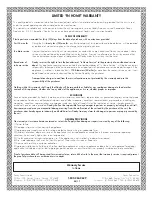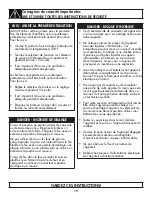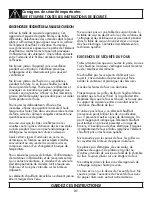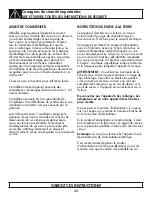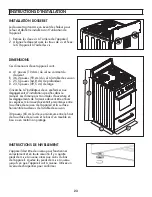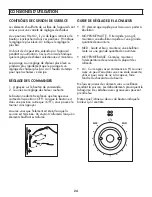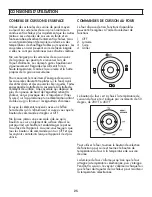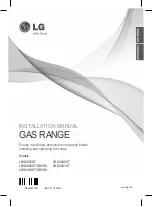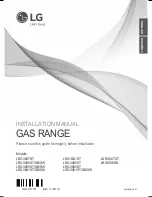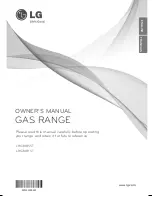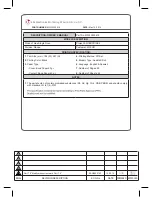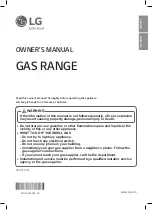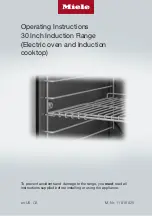
10
OPERATING INSTRUCTIONS
OVEN BROILING
Broiling involves cooking food by intense radiant
heat from the upper element in the oven. Most fi sh
and tender cuts of meat can be broiled. Follow these
steps to keep spattering and smoking to a minimum.
1. If the meat has fat or gristle around the edge,
cut vertical slashes through both about 2” apart.
If desired, fat may be trimmed, leaving a layer
about 1/8” thick.
2. Place the meat on a broiler grid in a broiler pan
designed for broiling. Always use the grid so
the fat drips into the broiler pan; otherwise the
juices may become hot enough to catch fi re.
3. Place the shelf in one of the top two positions for
most broiling.
4. Place the food in the oven and close the door.
Always broil with the door closed.
5. Turn the oven function selector knob to BROIL.
6. Turn the oven temperature knob to the desired
cooking temperature.
7. Food can be turned during broiling if necessary.
Be cautious of hot air or steam when opening
the oven door.
8. Make sure to turn the oven temperature knob to
OFF once broiling is complete.
BROILING TIPS
• If desired, marinate meats or chicken before
broiling or brush with barbecue sauce in the last
5 - 10 minutes of cooking.
• When arranging food on a pan, do not let fatty
edges hang over the sides as the dripping fat
will soil the oven as it cooks.
OVEN BAKING AND ROASTING
1. Position the shelves in the oven. If cooking on
two shelves at the same time, stagger the pans
for the best heat circulation.
2. Close the oven door. Turn the function selector
knob to bake. Turn oven temperature knob to the
desired temperature.
3. Allow the oven to preheat if required.
4. Place the food on the center of the oven shelf.
Allow at least 2 inches between the end of the
pan and the oven wall or any adjacent pans.
5. Check the food regularly. Remove once done
and ensure the oven is turned off.
BAKING AND ROASTING TIPS
• Follow a tested recipe and measure the
ingredients carefully. If you are using a package
mix, follow label directions.
• Do not open the oven door while baking or
roasting. Heat will be lost and the cook time
might need to be extended. If you must open the
door, open it partially and close it as quickly as
possible.
• Roasting is cooking by dry heat. Tender meat
or poultry can be roasted uncovered. Roasting
temperatures, which should be low and steady,
keep spattering to a minimum. When roasting,
it is not necessary to sear, baste, cover, or add
water to the meat.
• Frozen roasts of meat can be cooked without
thawing, but allow 10 to 25 minutes of
additional time per pound of meat (10 minutes
per pound for roasts under 5 pounds, more time
for larger roasts).
• Thaw frozen poultry before roasting to ensure
even cooking. Some commercial frozen poultry
can be cooked successfully without thawing.
Follow directions given on package label.

















